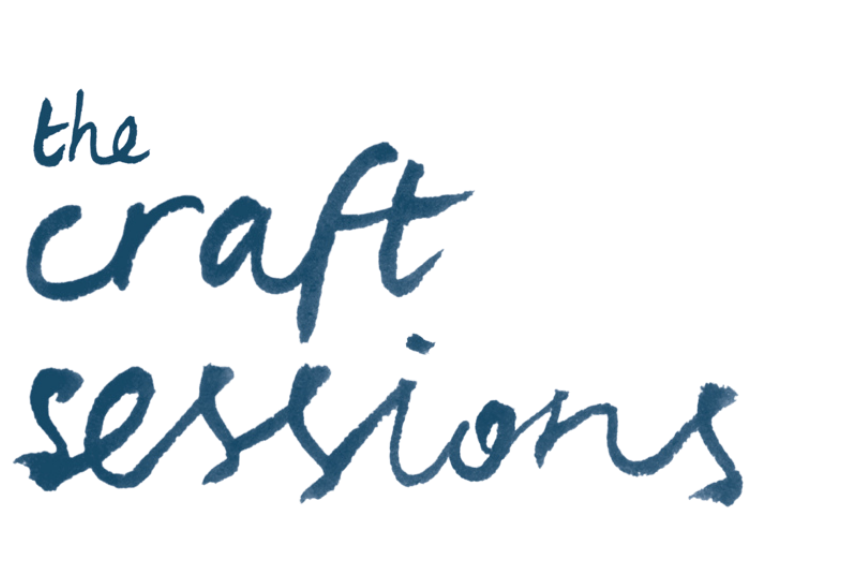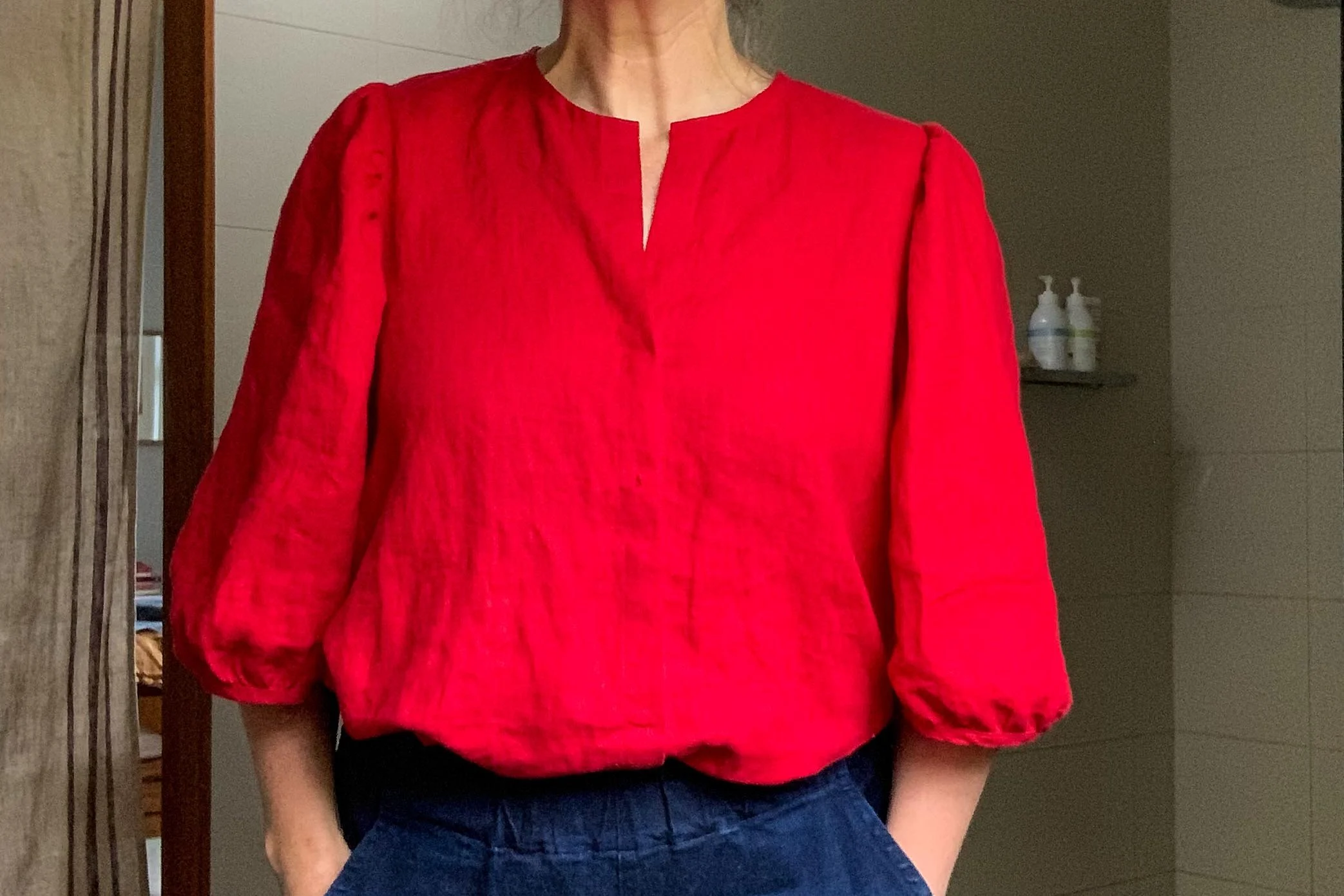The series where we talk about having a thoughtful stash. You can find all previous Stash Less posts here.
Stash Less is nearly a year old - October 7th will be the year anniversary since I began this challenge! And while I haven't written about it for a little while, I'm still working hard at changing my habits around purchasing, and around using my materials. Change has been a process that I am plugging away at. While progress has been made (which is pleasing of course) it turns out, there's a kicker. Even though I've done nearly a year's work, I haven't really felt like I've cracked it yet.
Recently I think I've come closer to understanding why. It's not pretty. Nor is it necessarily an easy fix.
Why? Why - even though I have enough materials, enough finished objects, a plan of what I want to make and limited time, AND a project called Stash Less on the go - why would I still get struck with desire? Stuck in desire, at the sight of some pretty yarn, sitting on the shelf at a pretty store. And why would it happen over again, straight after I've just purchased some other pretty thing that was sitting on a shelf, at a different pretty store. Why, after all this work to examine my purchasing triggers and change my purchasing habits, would I still be struggling sometimes to not push the purchase button on my internet shopping cart. Why would I even bloody well have things sitting in my internet cart in the first place.
I've talked about desire a bit as I've been writing my Stash Less posts - most notably in Stash Less - Selling Discontent and then Stash Less - I think I may have found the key. But as I'm still battling with it I went looking for some psychology around it to see if I could find some ideas to help me understand it better.
I've found you a couple of useful articles from a US (?) website called Psychology Today. They aren't necessarily the best articles on the topic - they are however two that popped up when I went wandering around the interweb. The first is called How Desire Fools Us: The Benefits and Dangers of The Chase and the another called The Problem of Desire. I would suggest that you go and read them if you're interested, but I'm going to sum up what I've learned from them (and articles like them) because I think that understanding desire may be the most helpful thing I can do to change my habits. You see, it turns out that there are reasons why this thing is so difficult. It turns out evolution is not on my side.
So, we need desire.
We wouldn't do anything without it. It is essential in order for us to get out of bed in the morning and go do anything. It gives you motivation. On the other end of the scale, depression is characterised by an absence of desire.
Anticipatory Joy
Desire gives us many things but one of the most important, when thinking in a Stash Less context, is anticipatory joy.
“Anticipatory joy also helps us complete more complex and challenging goals by providing us with the determination, excitement, and grit needed to complete marathons, college or graduate school degrees, or fluency in a foreign language.””
The anticipatory joy we get from desire gives us the ability to do more in our lives than things that are just immediately gratifying. And the joy itself, feels good. Crafting and all the daydreaming around it means we get to sit in desire, sit in the sparkle of longing. We get to think about what we might make, and how we might make it, and what the possibilities are. There is so much joy to be found in anticipation, especially when we are time poor, and distraction rich.
Getting the thing we desire doesn't cure the itch.
Desiring something, and then getting it, doesn't necessarily make us happy. Go watch this youtube video of Dan Gilbert talking about The Science of Happiness where he talks about the fact that we are terrible at predicting what will make us happy and that we often get it wrong.
You know that feeling when you purchase something you really thought you wanted, you enjoy it on the way home and then you get home and put it next to all that you already have and it becomes just another thing.....
““Moreover, as soon as a desire is fulfilled, people stop taking pleasure in its fulfilment and instead formulate new desires, because, in the course of evolution, contentedness and complacency did not tend to promote survival and reproduction.””
So we move straight on to desiring the next thing. Owning the thing doesn't fill us up.
And then there is greed.
Desire when done to excess is greed. And the feeling of being overwhelmed by visually being shocked by the amount of stuff I had purchased (read: greed) was what started Stash Less in the first place.
I really am not enjoying thinking of myself as greedy but in reality that is what it is/was. It's wanting things and then wanting some more. And some more even, though I have more materials than I need, and more materials that I can reasonably use.
It seems that we haven't evolved enough to get the concept of enough. How cool would that be - that when we had enough, our desires just switched off.
““Another problem of greed is that it is all-consuming, reducing life in all its richness and complexity to nothing but an endless quest for more.””
Not aware of most desires
The Problem of Desire then goes to to say that we are only really conscious of our desires (because we have so many) when they are really strong OR they compete with other desires we might hold.
This is where I am at. I have two competing desires.
1. To buy more/to own the pretty/to not feel like I am denying myself of something I want/to do what I please.
2. To purchase/own/hoard less and to instead to purchase meaningfully and with intention. To have a reasonable amount and to be happy with "enough". To not be in a state of desire. To be conscious.
We trick ourselves and make excuses
The Problem of Desire then went on to say that it gets even trickier as we are very good at using our intellect to disguise, justify or rationalise the desire. Our minds are a one-way desire fulfilling machines without a good feedback mechanism.
Doing Stash Less over the last year has changed me. When I'm slipping up these days, it's when I'm not paying enough attention or I'm when I'm using my intellect to reframe the purchasing into something valid, something reasonable.
I think this is the biggest problem I now face in changing my ways. Maybe you do too?
I/you care about the impact we have on the planet. I/you care about being thoughtful conscious consumers who aren't caught up in a spiral of never-ending desire.
And yet faced with something pretty, I justify with a "well this is really consciously produced, or small batch, or naturally dyed or blah blah..... special." But if I already have enough, if I have something that I could use for what I'm making that is good enough, then really all I am doing is making excuses. I am using my intellect against myself, and against the competing desire I have, which is to be conscious.
I'm worried this post is sounding a little negative. It isn't meant to be - it is meant to be a honest post about understanding some of the harder-to-change behaviours around purchasing. And to me understanding it is the key to not being a slave to the never-ending desire spiral.
Using Desire for Good
The first article I mention goes on to talk about how we can use some of the "negatives" of desire to our advantage. If I translate her ideas for our purpose then you would;
- Use the anticipatory joy to get things done - to create rather than purchase.
- Keep it real about why you are purchasing and try to find balance
- Remember the real circumstances/reasons for why people happy. Yarn is not on the list. Nor are things.
Point 2 has been critical for me. The biggest thing I've done is simply to get really conscious. And I think this will be an ongoing and long term project. I'll talk some more about this soon....
“Remember that happiness researchers agree that the key to happiness—after having adequate food and shelter—lies in personal relationships and social connection..... Most importantly, recent research shows that some of the deepest feelings of fulfillment don’t actually come from buying, purchasing, acquiring or succeeding at all, but that they actually come from giving. ”
Love your thoughts on this one.
Felicia x
P.S. Karen's Slow Fashion October is the perfect antidote to the desire spiral. I'm excited to be joining in and will start posting about it later this week.
Previously: Stash Less - Not just for the holidays.



